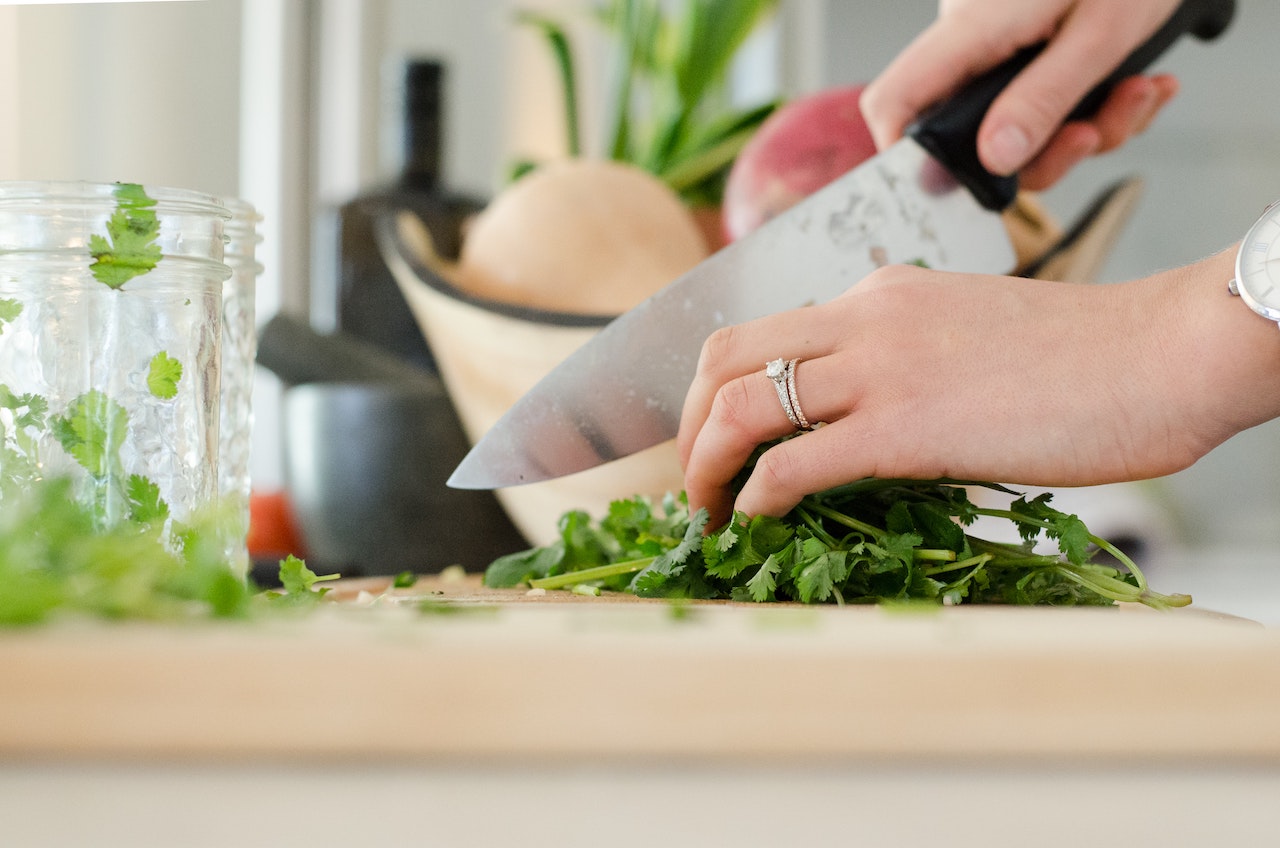Written by Lauren Ranley, MS, RD
Like fruits and vegetables, herbs and spices are plants that provide various nutritional benefits. Herbs and spices boast antioxidant and anti-inflammatory properties, making them an excellent addition to diabetes management. Studies show that inflammation and oxidative stress — the imbalance between antioxidants and free radicals in the body — play a role in the development and progression of type 2 diabetes. [1] Damage to DNA and cell tissues stimulate an inflammatory response within the body, contributing to insulin resistance. Avoiding processed foods that contain added oils, saturated fats, and simple sugars supports the reversal of insulin resistance - the root cause of type 2 diabetes. Increasing consumption of antioxidant and anti-inflammatory-rich foods can further help reverse type 2 diabetes.
How They Work
The beneficial properties of herbs and spices come from specific compounds such as alkaloids, polyphenols, phenolic acids, vitamins, and flavonoids. So what are these compounds, and how do they affect our health?
Alkaloids
Plant use: protection from pathogens and growth regulation
Health benefits: cardioprotective and anti-inflammatory properties
Found in: tomatoes, eggplants, potatoes, peppers, parsley, cumin, oregano
Polyphenols
Plant use: defense against UV radiation and pathogens
Health benefits: antioxidant properties
Found in: berries, vegetables, nuts, olives, rosemary, cloves, peppermint, sage, thyme
Phenolic Acids
Plant use: protection from various stressors, ranging from pathogens found in soil to UV damage
Health benefits: antioxidant properties
Found in: whole grains, nuts, fruits, oregano, thyme, rosemary, marjoram, sage, and tarragon
Vitamins
Plant use: varies, but roles range from supporting plant metabolism to promoting plant growth
Health benefits: Herbs and spices contain a variety of vitamins, each providing a different benefit to the plant and humans
Found in: citrus fruits, green leafy vegetables, berries, whole grains, basil, cilantro, thyme, oregano, rosemary, dill
Flavonoids
Plant use: growth regulation, pigmentation, UV protection, and defense and signaling between plants and microorganisms
Health benefits: antioxidant and anti-inflammatory properties
Found in: citrus fruits, soybeans, leafy vegetables, berries, parsley, oregano, dill, fennel, saffron, celery

Plant Defense Chemicals - What's True?
Hearing conflicting nutrition information on social media platforms makes it difficult to decipher the truth. The latest ‘information’ heard from influencers, with or without credible credentials, is the idea that plants (vegetables, fruits, herbs, etc.) release chemicals as a defense mechanism and are therefore dangerous for humans to eat.
The “plant chemicals” often referenced are substances produced as a defense response against herbivores (in doses meant to ward off bugs and pathogens). However, plant chemicals play a key role in accelerating pollination, camouflaging, and protecting against bacteria and fungus. [9] From a human physiology point of view, the phenolic compounds of plants, like the ones listed above, possess anti-inflammatory and antioxidant benefits. For chronic diseases, such as type 2 diabetes, plant foods, herbs, and spices are vital for management and prevention. [10] [11] [12]
What are the Best Herbs and Spices for Lowering Blood Sugar?
The specific compounds and nutrients found in herbs will vary, just as they do in fruits and vegetables. Rosemary, for example, derives its anti-oxidant and anti-inflammatory capacity from the presence of phenolic acids, carnosic acid, and carnosol. Each herb contains a different set of nutritional components, so consume a variety of herbs to get the maximum nutritional benefit.
Here are the top herbs and spices to help lower blood sugar:
Cinnamon
Studies suggest that cinnamon effectively increases insulin sensitivity and efficiency [2]
How to use: Add to oats, cereal, smoothies, or on fruit
We like this Organic Ceylon Cinnamon
Ginger
Research shows ginger is effective in lowering blood sugar and cholesterol levels in individuals with type 2 diabetes [3]
How to use: Add to stir fry, marinades, smoothies, dressings, or applesauce
We like this Organic Ground Ginger
Tumeric
In addition to anti-inflammatory and antioxidant properties, turmeric may increase insulin activity [6]
How to use: Add to spice rubs, smoothies, curry dishes, marinades, or oats
We like this Organic Turmeric Powder
Rosemary
Promising research shows that rosemary may be effective in preventing hyperglycemia due to the insulin-like effect of its polyphenols [7].
How to use: Add to roasted vegetables, marinades, soups, or dressings
We like this Organic Dried Rosemary
Aloe Vera
Good for more than just treating burns, this herb has shown to be effective at lowering blood sugar and triglyceride levels in individuals with type 2 diabetes [4]
How to use: Add the juice form to freshly squeezed juices, smoothies, or mocktails

What's Better? Fresh vs. Dried
Fresh and dried herbs contain the same nutritional profile and health benefits. Drying herbs not only makes them last longer and shelf-stable but concentrates the nutrient content and flavor. Fresh herbs are best used for uncooked foods or added at the end of cooking.
Fresh and dried herbs are incredible ways to amp up the flavor of a dish. Add a generous amount of dried herbs to roasted vegetables, marinate plant-based proteins with 2 or 3 different herbs and spices, and add fresh herbs to salads.
Herbs and spices are a great alternative to salt and best for those trying to reduce sodium intake.
References
[1] https://www.ncbi.nlm.nih.gov/pmc/articles/PMC6628012/
[2] https://www.ncbi.nlm.nih.gov/pmc/articles/PMC2901047/
[3] https://www.ncbi.nlm.nih.gov/pmc/articles/PMC3519348/
[4] https://doi.org/10.1016/S0944-7113(96)80060-2
[5] https://www.ncbi.nlm.nih.gov/pmc/articles/PMC3478874/
[6] https://www.ncbi.nlm.nih.gov/pmc/articles/PMC2964546/
[7] https://www.ncbi.nlm.nih.gov/pmc/articles/PMC5622728/
[9] https://www.ncbi.nlm.nih.gov/pmc/articles/PMC6274266/
[10] https://www.ncbi.nlm.nih.gov/pmc/articles/PMC6274266/
[11] https://www.hindawi.com/journals/ecam/2021/5570939/#discussion






Thank you for sharing those herbs and spices, and raising awareness about diabetes. The number of people having diabetes is rising today, so knowing this will help them to understand how to manage it.
Thank you for your comment!